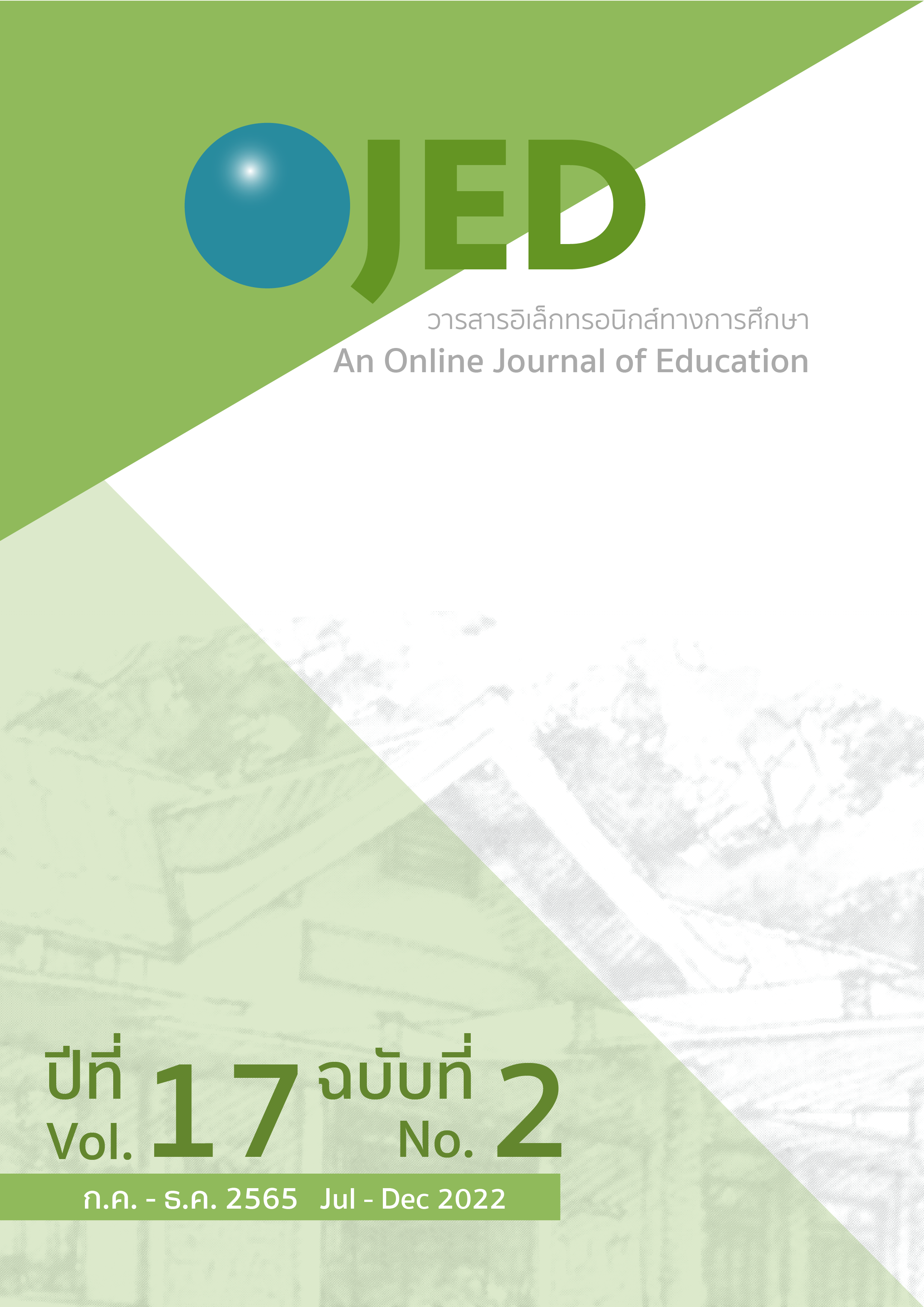E-learning Program in Developing Performance Management and People Competency-Based System in Disruptive Era
DOI:
https://doi.org/10.14456/ojed.2022.57Keywords:
e-learning lessons, e-learning programs, multimedia learning, performance management and human resource competencyAbstract
The objectives of this research were to 1) develop an e-learning program for Performance Management and People Competency-Cased System in Disruptive Era and 2) assess e-learning programs on Performance Management and People Competency-Based System in Disruptive Era. The e-learning program’s users are human resource developers, administrators, human resource management students or those involved in the management and development of human resources, and media production specialists. Six people were selected using a specific method. The research tools were e-learning lessons, end-of-chapter exercises, interview forms, and satisfaction questionnaires with a 5-level estimation scale, The statistics used to analyze the data are the mean and the standard deviation. The research results are as below: 1) The result in the creation of an e-learning program based on the Analyze-Design-Develop-Implement-Evaluate (ADDIE) model yields 10 multimedia lessons, 1 summary, and 5 exercises at the end of each chapter. 2) Evaluation of the student's program usage: The overall satisfaction average was high, with a mean of 4.09 and a standard deviation of 0.72. When all aspects were considered, it was found that the aspect that produced the most satisfaction was the use of the e-learning lessons (M = 4.3, SD = 0.692). The next most satisfying aspects were content (M = 4.2, SD = 0.772) and multimedia and transmission techniques (M = 3, SD = 0.72275), respectively.
References
กานตพร เจาะล้ำลึก และ อนิรุทธ์ สติมั่น. (2561). ผลการเรียนอีเลิร์นนิงแบบใช้ปัญหาเป็นฐานที่มีต่อการคิดอย่างมีวิจารณญาณ ความสามารถในการแก้ปัญหาและการทำงานร่วมกันของนักศึกษาระดับปริญญาตรี คณะศึกษาศาสตร์. วารสารอิเล็กทรอนิกส์ Veridian มหาวิทยาลัยศิลปากร (มนุษยศาสตร์สังคมศาสตร์และศิลปะ), 11(2), 1422-1439.
นรินธร์ นนทมาลย์. (2561). วิดีโอปฏิสัมพันธ์ในการเรียนแบบเปิดในศตวรรษที่ 21. วารสารครุศาสตร์ จุฬาลงกรณ์มหาวิทยาลัย, 46(4), 211-227.
สำนักงานคณะกรรมการพัฒนาการเศรษฐกิจและสังคมแห่งชาติ สำนักนายกรัฐมนตรี. (2560). แผนพัฒนาเศรษฐกิจและสังคม แห่งชาติ ฉบับที่ 12. สำนักงานคณะกรรมการพัฒนาการเศรษฐกิจและสังคมแห่งชาติ.
รติรัตน์ อินต์ธะวิชัย. (2562). รายงานการวิจัย การพัฒนาการจัดการศึกษาเพื่อยกระดับผลสัมฤทธิ์ทางการเรียนของนักศึกษาหลักสูตรการศึกษานอกระบบระดับการศึกษาขั้นพื้นฐาน พุทธศักราช 2551 กศน. อำเภอลอง จังหวัดแพร่. สำนักงานส่งเสริมการศึกษานอกระบบและการศึกษาตามอัธยาศัย จังหวัดแพร่.
เลิศชัย สุธรรมานนท์. (2560). กลยุทธ์การบริหารทรัพยากรมนุษย์เพื่อองค์กรยั่งยืน. จุฬาลงกรณ์มหาวิทยาลัย.
อนิรุทธ์ สติมั่น และ ฐาปนีย์ ธรรมเมธา. (2555). การพัฒนาชุดบทเรียนออนไลน์ เรื่อง วิธีการเรียนการสอนอีเลิร์นนิงสำหรับผู้สอนในสถาบันการศึกษา. วารสารศึกษาศาสตร์มหาวิทยาลัยศิลปากร, 10(1), 91-105.
อุบลรัตน์ วิเชียร, ทัศนันท์ ทุมมานนท์, ณัฐพร มีสุข, และ ทศพร รานุรักษ์. (2562). ประสิทธิผลการเรียนการสอนโดยใช้บทเรียนอีเลิร์นนิงสำหรับนักศึกษาหลักสูตรสาธารณสุขศาสตรบัณฑิต สาขาวิชาทันตสาธารณสุข วิทยาลัยการสาธารณสุขสิรินธรจังหวัดชลบุรี. วารสารพยาบาลทหารบก, 21(1), 406-412.
Aguti, B. (2015). A model to facilitate effective e-learning in technology-enhanced learning environments within universities [Unpublished doctoral dissertation]. Southampton University.
Goyal, S. (2012). E-Learning: Future of education. Journal of Education and Learning, 6(2), 239-242.
Rivera, J. (2021, March 18). Ten strategies for a successful e-learning experience. https://online.wlu.ca/news/strategies-successful-online-learning.
Downloads
Published
How to Cite
Issue
Section
License
Copyright (c) 2022 An Online Journal of Education

This work is licensed under a Creative Commons Attribution-NonCommercial-NoDerivatives 4.0 International License.




